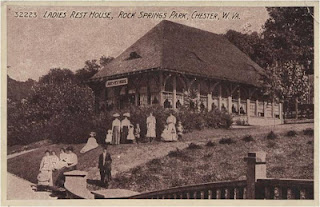 |
| Central Russia (1812) |
Location: Allegedly somewhere in central Russia (as defined in the late 19th century). Difficult to pinpoint exactly where this could have been, as the name is not on contemporary maps and there have been many border and name changes since then.
Founded: As an all-women "state" or "colony" in 1861
Closed: There are several articles published between 1897 and 1901 about this place, but no references after that time.
This is one of those odd little stories I stumble upon from time to time. Was this a real place? Or was this a folklore fantasy, like Sweden's all-lesbian Chako Paul City? (Chako Paul City was "created" by the Chinese media back in 2009.) Only more research will tell. Here's the news account from 1897, which is the earliest I have found and the most extensive description.
From the Free Lance, March 20, 1897:
WHERE WOMEN RULE.
The Name of their Colony a Jawbreaker.
There is at least one spot on earth where women have their rights. If they do not it is their own fault, for they are the supreme arbiters of social and industrial conditions, and run everything to suit their own caprices. The place in question is the township of Besjukovschtschina, located in central Russia. Whether or not the women had the privilege of naming the place is not known. If they are guilty they proved themselves a failure at the start, for there are several letters in the alphabet they did not employ in designating it. It was in 1861 that an epidemic had reduced the population to the verge of starvation, and the women, led by Saschka, ordered the men to leave and go to the city to find work. The women remained alone and began to till the farms. The men were allowed to return only for the holidays.
The woman state comprises a territory of ten square miles and is divided into seven villages. Saschka and several other women, the wives of the exiled elders, administer to all public affairs, such as the levying of taxes, the allotment of acres to the various families, the keeping up of the churches, the paying of shepherds, etc. They also assume the recruiting officer's duties by sending those men who attain the proper age to town in order to submit to medical examination.
In the summer the fields of the district afford a peculiar aspect. One may ride over the Besjukovschtschina domain from morn till night without encountering a single male being. All the work, the hardest as well as the lighter manipulations, is executed by women and girls of different ages. With naked feet and arms they trot behind the plow, throw out seeds and gather fruit. Here we observe a dozen or more members of the weaker sex engaged in lifting a mighty rock; or subduing a bucking horse or a wild bull. Toward evening all hands assemble in the church squares of the seven villages to hear reports of common interest, the women acting mayors being speechmakers, who discuss public questions in a decisive and businesslike manner. This done, the women go home to attend their own affairs.
Besides cultivating the fields they keep the roads in order and ocassionally set up a new cottage or stable. When on the occasion of his coronation, the czar [Alexander III in 1881? Nicholas II in 1894?] released some 20,000 communities of the obligation to discharge their back taxes, Besjukovschtschina, not being in arrears like the rest, was not benefited, and that is nearly the only regretful incident Saschka's administration has developed in the eyes of her partners. A governmental statistician who visited the colony recently gathered material showing that since the enforced grass widowhood the Besjukovschtschina die at an earlier period than was their fate during the old days of serfdom.
The Evening Post from May 28, 1898 adds a few more details, but not many:
 |
| Traditional costumes of Central Russia |
The Women's Signet says: 'The state of Besjukovschtschina, in Russia, is probably the only place in the world that is ruled by women. This State is made up of seven villages, each presided over by a Mayoress, the whole under the superintendence of a lady named Saschka, who acts as President. There are women magistrates, women preachers, women police--in fact, every capacity is filled by women. The roads are made by women, and women sell milk and deliver letters. If you want to bring action against your neighbour in this State, you go to a woman lawyer, and if there is anything in your house to be stolen, then a burglar of the weaker sex steals it. No place of any importance is filled by a man. This state of affairs has been brought about by an epidemic in 1861, and during which time the men of the State behaved so badly as to reduce the population to starvation. Since then the women have taken the State in hand and made it prosperous.
Other references to Besjukovschtschina can be found in 1899, 1900, and 1901. But these are all regurgitations of the articles already cited.
As somebody with a little background in demography, one contradiction did stand out for me. I highly doubt that this place had both a declining life expectancy and increasing prosperity. That just doesn't happen.
If Besjukovschtschina really once existed, the ways she could have been destroyed are nearly too numerous to recount. You don't have to be an expert in twentieth century history to figure this out. Start with a pogrom-like attack. Then throw in the Russian Revolution of 1905, the first World War, the Russian Revolution of 1917, The Russian Civil War....And if she had survived all that, how would she have survived Hitler and Stalin?

































